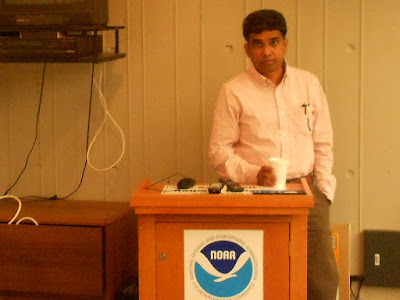Hazardous pesticides and industrial chemicals that can
kill people, damage the nervous and immune systems,
cause cancer and reproductive disorders
and interfere with normal infant and child development.
The
nine new chemicals now listed under the Stockholm Convention are:
Alpha hexachlorocyclohexane to Annex A;
Beta hexachlorocyclohexane to Annex A;
Although the intentional use of alpha- and beta-HCH as an insecticide was phased out years ago,
these chemicals are still produced as an unintentional by-product of lindane.
Approximately 6-10 tons of other isomers including alpha- and beta-HCH result from each ton of lindane produced.
Hexabromodiphenyl ether and heptabromodiphenyl ether to Annex A;
Tetrabromodiphenyl ether and pentabromodiphenyl ether to Annex A;
Bromodiphenyl ether congeners are a group of brominated organic substances that inhibit or suppress combustion
in organic material, which are used as additive flame retardants.
Brominated diphenyl ethers are mainly manufactured as commercial mixtures where several isomers, congeners and small amounts of other substances occur.
Chlordecone to Annex A;
Chlordecone is a synthetic chlorinated organic compound, which was mainly used as an agricultural pesticide.
It was first produced in 1951 and introduced commercially in 1958.
Current use or production of the chemical is not reported.
Hexabromobiphenyl to Annex A;
Hexabromobiphenyl (HBB) is an industrial chemical that was used as a flame retardant, mainly in the 1970s.
Based on existing data, HBB is no longer produced and is not used in new or existing products.
Lindane to Annex A;
Lindane was used as a broad-spectrum insecticide for seed and soil treatment,
foliar applications, tree and wood treatment and against ectoparasites in both veterinary and human treatments.
Lindane production has decreased rapidly in recent years and only a few countries still produce it.
Pentachlorobenzene to Annex A and C;
Pentachlorobenzene (PeCB) was used in PCB products, dyestuff carriers, as a fungicide,
a flame retardant and a chemical intermediate such as the production of quintozene
and it may still be used for this purpose.
PeCB is also produced unintentionally during combustion in thermal and industrial processes.
It appears as an impurity in products such as solvents or pesticides.
Perfluorooctane sulfonic acid, its salts and perfluorooctane sulfonyl fluoride to Annex B;
PFOS is both intentionally produced and an unintended degradation product of related anthropogenic chemicals.
The current intentional use of PFOS is widespread and found in products such as in electric and electronic parts,
fire fighting foam, photo imaging, hydraulic fluids and textiles. PFOS are still produced in several countries today.
The 12 initial POPs covered by the Convention include
nine pesticides (
aldrin,
chlordane,
DDT,
dieldrin,
endrin,
heptachlor,
hexachlorobenzene,
mirex
and toxaphene);
two industrial chemicals (
PCBs as well as hexachlorobenzene, also used as a pesticide);
and the unintentional by-products, most importantly dioxins and furans.
Further information is available at
www.pops.int
People and government should ban these chemicals and move to Sustainable Natural Agricultural Practices.



























